Will Rogers once proclaimed San Antonio “one of America’s four unique cities.” Wake up in the Alamo City with the scent of huevos rancheros in the air, the sound of mariachis filling the streets, and the sight of barges winding down the San Antonio River, and you know you’re someplace special. Even other Texas cities don’t boast San Antonio’s unique spirit.
Texans, whether residents of Amarillo or Zapata, have adopted San Antonio as their second hometown. When Texans think of a vacation spot in the Lone Star state, we look to the Alamo City. It brings back memories of childhood field trips to the Alamo, romantic strolls on the River Walk, Christmases beneath thousands of tiny lights, and family fun at the theme parks. Choosing the best things to do in San Antonio is truly a Texas-sized task!
For many San Antonio visitors and residents, this city means history. You find historic buildings, historic homes, even sites where the food is historic! While most of Texas is still a babe compared to Eastern destinations, San Antonio traces its roots back over half a millennium and has the attractions to prove it.
But man-made attractions don’t make up all the sights of San Antonio: the natural beauty of the city is readily apparent with a quick look around. From the cypress-lined River Walk to the beauty of Brackenridge Park, San Antonio has plenty of destinations for a shady stroll.
In planning your visit to San Antonio’s many attractions, keep the factor of summer heat in mind. Do like residents: plan outdoor and strenuous excursions in the morning hours then head for indoor or shady attractions during the heat of the day.
Table of Contents
Visit the Alamo
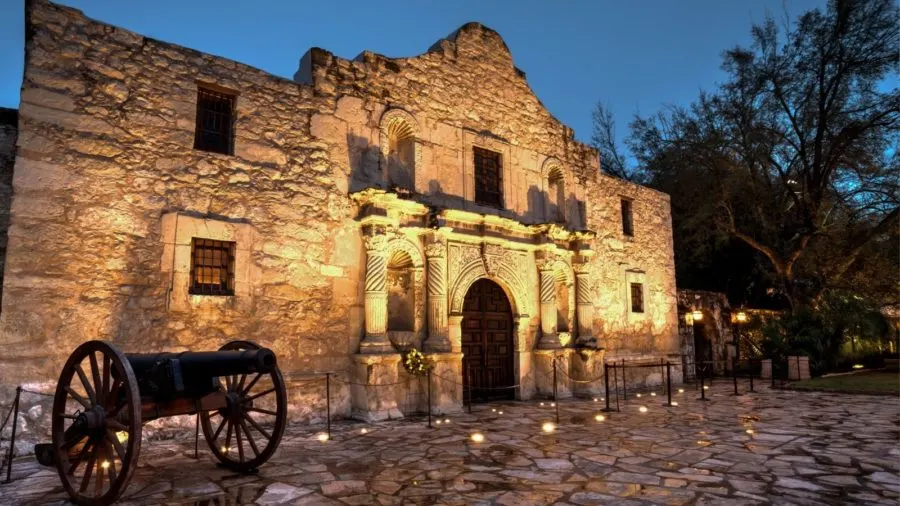
The most famous sight in Texas, this mission is now a symbol of the fight for freedom in the battle for independence from Mexico. It’s often referred to as the “cradle of Texas liberty,” and even today, talk is hushed here, men remove their hats, and photography is prohibited. It stands as a reminder of the Spanish colonization of this area and of the bloody battle that was fought so valiantly.
Established in 1718 as the Mission San Antonio de Valero, it plunged into history on March 6, 1836, when 188 men died after being attacked by Santa Anna’s Mexican forces. Among the most famous defenders were Jim Bowie, William B. Travis, and Davy Crockett.
The former mission is surrounded by Alamo Plaza, a site that is at one time historic and hysterical, the ultimate shrine to Texas history alongside shrines to the Texas tourist. Alamo Plaza is also the home of the heart of the city’s most tourist-oriented businesses: souvenir stands, a wax museum, and a bounty of tour companies. But somehow, this all works together to give visitors the feeling of visiting a site worthy of both solemnity and souvenirs.
Note: if you are traveling with your dog, your dog can only stand on Alamo grounds no closer than the start of the wide grassy area that lies in front of the building. (Basically they’ll need to remain on the sidewalk near the street but you’ll still be able to get a nice photo with the Alamo as a backdrop.)
Paseo del Rio or River Walk

The Paseo del Rio, or River Walk, is a magical place 20 feet below street level. Nestled behind tall buildings, away from traffic and street noise, the River Walk is the most popular spot in town, lined with specialty shops and European-style al fresco cafes. Visitors stroll the walkways that follow the winding river. Some sections throng with visitors shoulder-to-shoulder ; others have a quiet, almost park-like atmosphere.
Today the River Walk is the heart of the city. Tourists from around the world pack the hotels there. Military personnel from San Antonio’s bases enjoy a few hours off duty at the outdoor cafes. And locals, lifelong San Antonians, come to the area to enjoy a respite from the hustle and bustle of the city.
Museum Reach of the River Walk
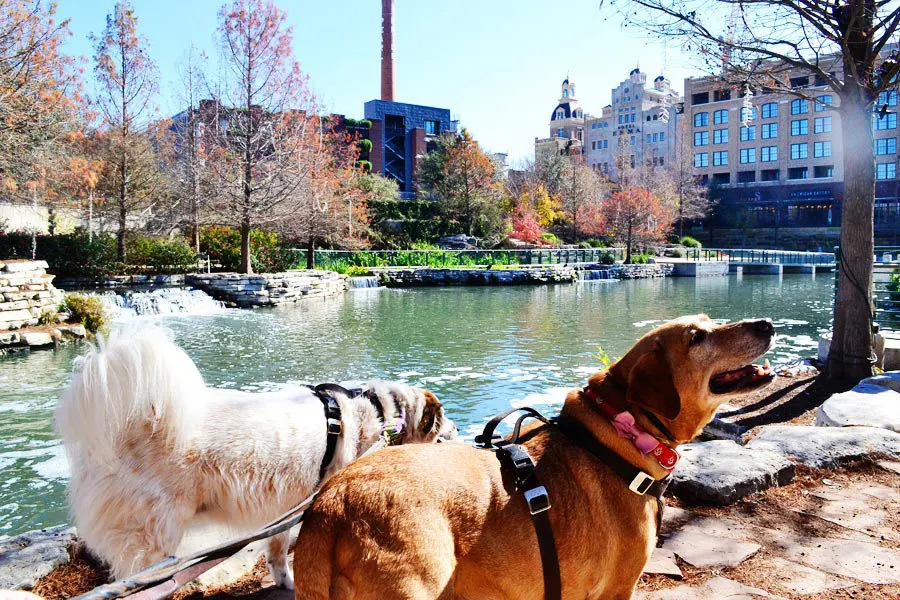
If you are looking for a quieter getaway, head to the Museum Reach of the River Walk. Connecting the downtown River Walk with the San Antonio Museum of Art, this 1.33-mile extension is a quiet walkway lined with artwork and native plants. And while this stretch of the River Walk is far newer than its downtown neighbor, you’ll find history here as well.
The Museum Reach is home to the 22-acre Pearl, the site of the Pearl Brewery (first named City Brewery), which opened here in 1884.
The Pearl Brewery closed it doors here in 2001 but the location soon began a new and exciting chapter as both a culinary and cultural destination. Home of the third campus of The Culinary Institute of America, the Pearl is well-known for its restaurants, farmer’s market, and famous tamale festival every December.
In the shadow of the Pearl smokestack and Hotel Emma, located in the historic brewhouse and named for the woman who took over the brewery upon her husband’s death, this stretch of the River Walk is perfect for strolling the nice, wide sidewalks (and bring your dog along!)
Tower of the Americas
No matter from which direction you approach San Antonio, you’ll see the Tower of the Americas looming over the skyline. This symbol of the 1968 World HemisFair remains a landmark for downtown San Antonio. Visitors view the city from the observation deck at 579 feet.
Close to three decades after its construction, this is still one of the tallest free-standing structures in the Western hemisphere—87 feet taller than the Seattle Space Needle and 67 feet higher than the Washington Monument.
Since its construction, the Tower and its grounds have undergone many changes. In April 1988, HemisFair Park was rededicated after a $12 million renovation of the grounds. In March 1990, a $1.2 million restoration was completed on the Tower.
Today you can enjoy a one-minute elevator ride traveling seven miles per hour to the observation deck, where high-powered telescopes provide a bird’s-eye view of the city’s sights. Eight panoramic photo panels help locate major attractions. Both enclosed and open-air observation decks are open, and a night visit is especially breathtaking.
air Park, home of the 1968 World’s Fair, is this 750-foot tower. Visitors are whisked up the structure on a one-minute elevator ride to the 579-foot-high observation deck, where high-powered telescopes provide a bird’s-eye view of the city’s sights.
Panoramic photo panels help locate major attractions. Both enclosed and open-air observation decks are open, and a night visit is especially breathtaking.
Close to three decades after its construction, this is still one of the tallest free-standing structures in the Western hemisphere—87 feet taller than the Seattle Space Needle and 67 feet higher than the Washington Monument.
Following an $11 million redevelopment effort, the Tower of the Americas reopened June 21, 2006. The Tower now includes:
Chart House Restaurant: This 250-seat restaurant features floor-to-ceiling windows, and the second floor Bar 601 provides additional space to enjoy a panoramic view of the city.
Skies Over Texas: A 50-seat, $4 million multi-sensory theater, Skies Over Texas uses 4D technology to put viewers squarely in the middle of the action by incorporating sensory elements that create realistic and involving experiences.
Observation Deck: At the top of the tower, the open-air observation deck offers views of one of the state’s most historic cities.
UTSA Institute of Texan Cultures
Operated by the University of Texas at San Antonio, this museum near the Tower of the Americas explores the 30-plus ethnic cultures that settled Texas. Don’t miss the dome slide show four times daily for a look at the many faces of the Lone Star State. Children especially love this place.
Most days you’ll find costumed docents throughout the museum, ready to educate visitors about the role of a chuck wagon cook on a cattle drive or the rigors of life as a frontier woman. Along with an outdoor interpretive area, the focal point of the museum is the dome show, which utilizes 36 screens to portray the people and places of Texas.
Market Square

Bounded by Interstate 35 and Santa Rosa, Dolorosa, and Commerce Streets, this two-block area embraces three special shopping centers: Farmer’s Market Plaza, a renovated former produce market ripe with crafts and imports; an open-air consortium of specialty boutiques; and El Mercado, the largest Mexican market in the United States.
The history of Market Square dates back to the early 1800s, to a time when Mexico ruled the settlement of San Antonio de Bejar. Fresh produce and meats were sold in the Farmer’s Market, and pharmaceutical items were available at Botica Guadalupana.
However, the market’s real claim to fame lies in the fact that it was the birthplace of chili con carne, the spicy meat and bean mixture that today is generally considered the state dish of Texas. Once young girls known as “chili queens” sold the concoction from small stands in the market.
El Mercado offers any kind of item that shoppers typically find in a Mexican border town. Styled after a traditional Mexican mercado or market, this one is enclosed and air conditioned, with merchandise piled to the ceiling. Look for onyx chess sets, ashtrays, painted pottery, silver jewelry, sombreros, and charro hats.
The prices here are slightly higher than those found in Mexican border towns and, unlike the fare offered in traditional mercados, the merchandise carries set prices. Prices vary from store to store within the market, and most shops accept major credit cards.
San Fernando Cathedral
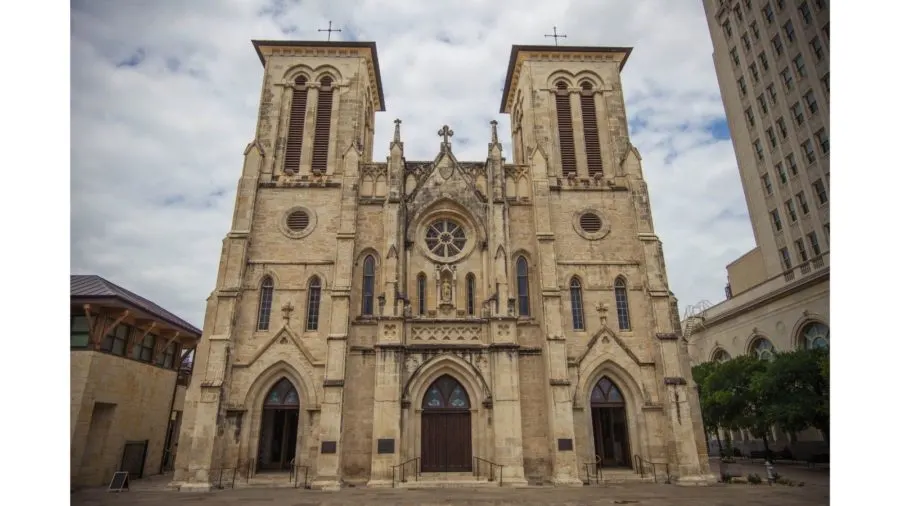
America’s oldest cathedral sanctuary is San Antonio’s San Fernando Cathedral, which was founded in 1731 by Canary Islanders. Its 9 a.m. Sunday mass is broadcast across the country; it can also be seen locally on Catholic Television of San Antonio, cable channel 15. The cathedral is also well known among visitors of all denominations for its annual reenactment of the Way of the Cross on Good Friday; the Spanish language presentation draws thousands of viewers.
Still very much an active place of worship, this historic church was constructed in 1738 by Canary Island colonists, making this the oldest cathedral sanctuary in the nation.
Here Santa Anna raised a flag of “no quarter” before he stormed the Alamo, signifying to the Texians that he would take no prisoners.
The cathedral has another link with the Alamo: in the back of the chapel, a sarcophagus holds what many believe to be the remains of the Alamo defenders. The remains were unearthed during a renovation in 1936.
Although a tomb holds the remains of some unknown soldiers, modern historians do not believe these were the bodies of the Alamo defenders because evidence of military uniforms, never worn by the Texians, has turned up among the remains.
The site suffered a fire in 1873 and the chapel was replaced with what visitors see today. Nonetheless, the site is filled with historic items including a stone baptismal font which is believed to have been a gift from King Charles III of Spain in 1759. The pipe organ is the oldest in the city. The church was visited by Pope John Paul II on his San Antonio visit on September 13, 1987.
For all its history, the cathedral remains a very active church today. Over 4,000 worshippers attend each Sunday’s mass; the cathedral also performs over 900 baptisms and 100 weddings every year. The cathedral also serves as the location of the Archdiocese of San Antonio.
Mariachi Mass, San Antonio
One mass often attended by visitors of all denominations is the Mariachi Mass at Mission San Jose.
Scheduled for noon on Sunday, the English-language mass is accompanied by Spanish songs played by mariachi musicians.
The mass is quite popular (often standing room only), and visitors are encouraged to arrive early in appropriate worship dress.
San Antonio Missions National Historical Park
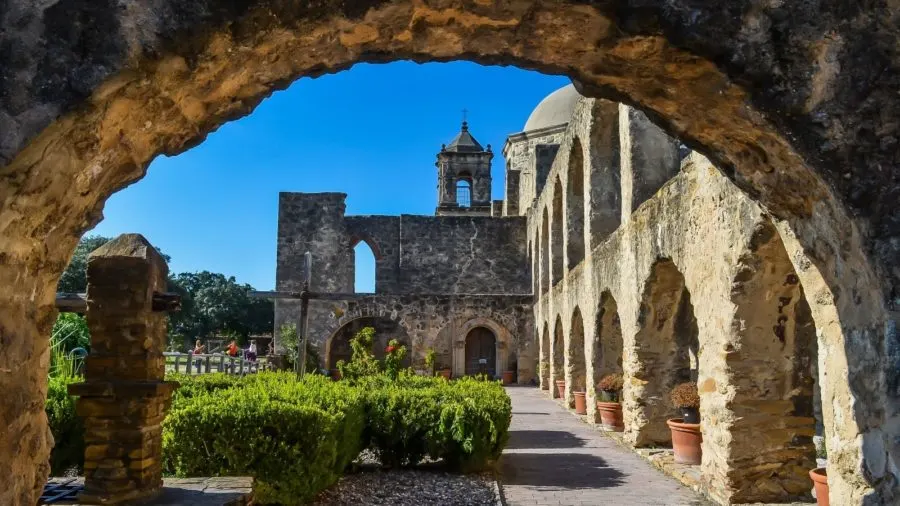
The national park, which stretches for 9 miles along the San Antonio River, is comprised of four remaining missions (outside the Alamo) that were constructed by the Franciscan friars in the 18th century.
You can drive from mission to mission or enjoy the Missions Hike and Bike Trail which connects the sites, following the San Antonio River. The sites along the trail include:
- Mission San José. The most complete structure in the tour, Mission San José was built in 1720. It has beautiful carvings, eighty-four rooms that once housed Indians, a restored mill with waterwheel, and what may be the only complete mission fort in existence. Make this mission your first stop; it is also home to the Visitors Information Center.
- Mission Concepción. Built in 1731, this mission has earned the distinction of being the oldest unrestored stone church in the country.
- Mission San Juan Capistrano. Relocated here from East Texas, this mission was never completed.
- Mission San Francisco de la Espada. Established in 1731, its original chapel was in ruins by 1778 and the building was reconstructed around 1868.
Spanish Governor’s Palace
Located just down the street from Market Square, this historic site was once home of the officials of the Spanish Province of Texas. Today it’s the only remaining example in Texas of an early aristocratic Spanish home. Completed in 1749, the structure is open for self-guided tours of the antique furnished rooms and cobblestone patio.
The National Geographic Society has called the Spanish Governor’s Palace “the most beautiful building in San Antonio.”
Don’t expect a palace in the usual sense of the word—turrets and towers are replaced by a simple patio and courtyard here. Remember, this site dates back to the early 18th century, a time when the area was wild and unsettled, and this was considered quite ornate, comparatively speaking. Built for officials of New Spain, today it’s the only remaining example in Texas of an early aristocratic Spanish home.
Brackenridge Park
The largest park in the city, Brackenridge sprawls across 433 acres shaded by majestic live oaks. A popular picnic destination, the park is also home to the San Antonio Zoological Garden and Aquarium, housed in a former rock quarry.
Nearby the Japanese Tea Gardens showcases lush flowers, climbing vines, and tall palms alongside many koi-filled ponds.
Marion Koogler McNay Art Museum
The Spanish Mediterranean-style home (Atlee B. and Robert M. Ayres, 1926, remodeled 1954) of the late art collector Marion Koogler McNay, heiress to an oil fortune and an artist herself. The 24-room house, which was converted to a museum in the 1950s, now houses this collection of European and American art.
The Marion Koogler McNay Art Museum, better known around town as just the McNay, was the first museum in Texas devoted to modern art.
Works of Picasso, Van Gogh, Matisse, and Gauguin are found in the permanent collection. After a look at the impressive collection, visitors can stroll the palm-shaded grounds, popular with picnickers.
San Antonio Botanical Gardens and Halsell Conservatory
Separate gardens for roses, herbs, and native plants are found within these 38-acre gardens. The centerpiece here is the Lucile Halsell Conservatory, designed by Emilio Ambasz, formerly Curator of Design at New York’s Museum of Modern Art.
To take advantage of the cooling effect of the earth during hot Texas summers, the greenhouse is built 16 feet underground. Separate structures showcase palm trees from around the world, desert plants, and tropical foliage.
San Antonio Zoological Garden and Aquarium
Widely considered one of the best zoos in the nation, the zoo is located at the headwaters of the San Antonio River. Surrounded by limestone cliffs (this was once a former rock quarry), the exhibits include animals from habitats around the world.
The zoo is best known for its excellent collection of African antelopes as well as other hoofed species. You’ll find many other popular favorites, too, from African lions to Asian elephants and from snow leopards to giant armadillos. Over 3,500 animals representing 750 species are exhibited here. Birds, including many housed in open-air exhibits, make up a large part of the collection. San Antonio holds the distinction as the only zoo in the nation with a pair of whooping cranes who have successfully bred in captivity. Other notable accomplishments include the first Caribbean flamingos hatched and reared in a zoo, the first white rhino born in North America, and the breeding program of the rare snow leopard.
Japanese Tea Gardens
Part of the San Antonio Zoological Garden and Aquarium, San Antonio’s semitropical climate encourages the lush flowers, climbing vines, and tall palms found inside this quiet, serene place. The ponds, with beautiful rock bridges and walkways, are home to koi (large goldfish).
This limestone quarry was transformed into a garden in 1918, when fish ponds and a palm-thatched arbor were featured in the development. Later, a pagoda was added and a Japanese-American couple operated a tea room nearby. In World War II, public pressure forced the family to move, and the tea room was taken over by a Chinese family. The attraction was renamed the Chinese Tea Gardens. Recently, descendants of that Japanese-American couple, along with the Japanese ambassador to the United States, were hosted as the gardens were officially renamed the Japanese Tea Gardens.
San Antonio Museum of Art
This expansive museum is housed in buildings of Lone Star Brewery on what is called the Museum Reach portion of the River Walk. The museum maintains its factory feel with skywalks and glass elevators. Collections include Ancient Egyptian, Greek and Roman antiquities as well as Asian art, 18th, 19th, and 20th century American work.
The three-story Rockefeller Center for Latin American Art is considered one of the nation’s best collections of Latin art. Located on the east side of the museum, the center begins with an educational center with computer stations to offer instruction about Latin American culture and history.
Exhibits portray the long history of Latin American art starting with the Pre-Classic Period in 2000 B.C. and continuing through the Magical Realism Movement of recent decades.
Witte Museum
This exciting museum, a favorite with children for its interactive exhibits, covers all things Texan, from the area’s dinosaur inhabitants to the white-tailed deer that roam the region today.
The museum collection is extensive. One of the best exhibits is “Texas Wild: Ecology Illustrated,” a look at the ecology of this diverse state. Nearby, a display takes a look at the ancient Texans who first called this land home over 8,000 years ago when they roamed the region as hunter-gatherers.
After a look around the museum, step out back to check out the historic homes which have been relocated to this courtyard. Here you’ll also find the H.E.B. Science Treehouse, a four-story collection of interactive exhibits on science concepts. Perched in concrete “trees,” this museum is a favorite with children.
Six Flags Fiesta Texas
Fiesta Texas operates in a former limestone quarry. The white, chalky stone used to build homes throughout Central and South Texas was mined from this and similar sites, leaving behind tall limestone cliffs that make dramatic backdrops for the park.
San Antonio has a long history of reusing its quarries: the San Antonio Zoo and the Japanese Tea Gardens occupy a former quarry, using the walls to contain animals and grow subtropical vines.
Fiesta Texas showcases music, from ’50s rock ‘n roll and local Tejano sounds to oompah German tunes. The award-winning shows are interspersed with thrill rides, sure to bring a squeal to even the most jaded amusement park goers.
You’ll enter the park throughLos Festivales, styled with stucco buildings and rich with the atmosphere of Texas’ closest neighbor. Wandering musicians play festive mariachi music and open-air shows feature Tejano and conjunto music. You won’t find rides in this section, but you will see the park’s largest theater: Teatro Zaragoza. A great place to save for the heat of the afternoon, the theater is home to the Festival Folklorico show, with swirling Mexican dances and traditional songs.
Los Festivales also provides a taste of Old Mexico. Pick up some churros (deep-fried dough doused with sugar) and roasted corn, or, if you’re ready to take a break, enjoy a meal in the Mi Pueblito restaurant (reservations are accepted).
A good place to escape the heat is aboard one of the park’s water rides. Waterpark at Six Flags Fiesta Texas is entirely devoted to water rides, especially popular during the summer season.
SeaWorld® San Antonio and Aquatica® San Antonio
Located 16 miles northwest of downtown, SeaWorld® San Antonio and Aquatica® San Antonio feature two park experiences.
Displays and shows featuring orcas, dolphins, seals, and otters highlight SeaWorld® San Antonio. Next door, Aquatica® offers water rides from serene to extreme, crashing surf and opportunities to meet stingrays, tropical birds and other animals. Soar up a three-story high wall on Walhalla Wave® , or simply relax and soak up the sun on white sand beaches.
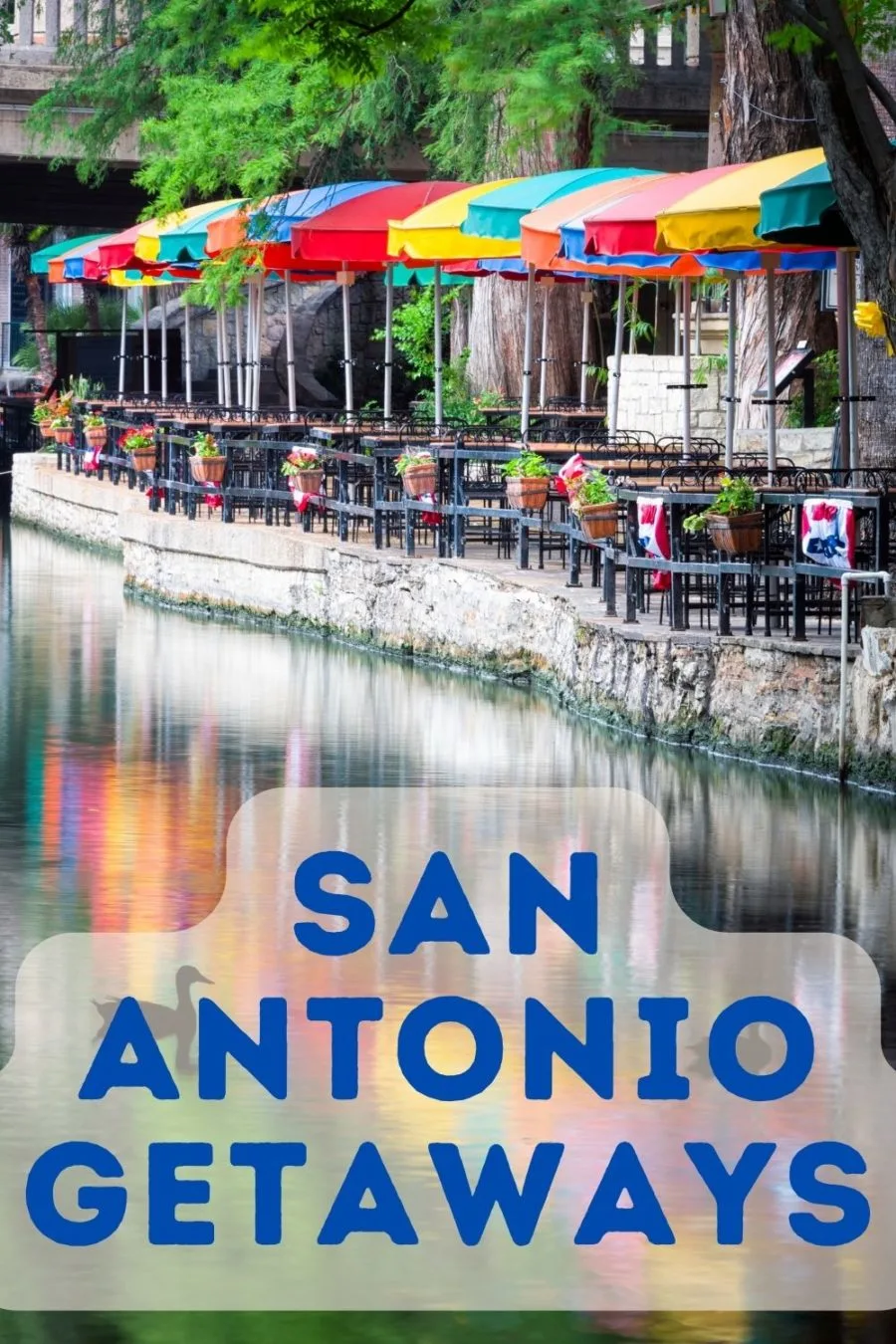
San Antonio Barbecue
Bun ‘n Barrel
If you’re nostalgic for the 1950s, visit the Bun ‘n Barrel. Founded in 1950, this diner is a genuine product of those happy days, complete with car hops, frothy malts, and a lunch counter. The walls are dotted with photos of classic cars, and a bulletin board by the cash register is dotted with ads offering classic cars and parts. Every Saturday night, oldies enthusiasts fill the Bun ‘n Barrel parking lot, swapping stories and making deals on those old jalopies.
But the best reason to visit the Bun ‘n Barrel is the barbecue — and the buns. Order the chopped beef sandwich, a finely chopped mixture devoid of fat, seasoned with tangy sauce. It’s served up on a homemade braided roll dotted with poppy seeds. If you’re in the mood for something else, try the pork ribs, beef sausage, ham, or turkey breast served with potato salad and ranch-style beans.
Watch where you park at the Bun ‘n Barrel. Although the sign says “Flash Your Lights for Service,” we had a car hop at our door moments after mistakenly pulling into the take-out lot. Also, behind the restaurant there’s another Bun ‘n Barrel building for take-out orders only.
Grady’s Bar-B-Que
Grady Cowart started keeping the folks in San Antonio happy with big plates of barbecue in 1948. These restaurants serve up some of the most inexpensive offerings in the region, in large, comfortable dining rooms decorated with cowboy art.
You can choose from beef, sausage, ham, or rib plates. We opted for brisket and ribs and couldn’t have been happier. The brisket was tender and thinly sliced, served with a tangy sauce. The ribs were also cooked to tender perfection. All the plates arrive with a corn bread muffin plus a choice of two side dishes: french fries, potato salad, coleslaw or beans. We didn’t have a chance to try the french fries, but the potato salad was flavorful and crisp.
If your hunger is too small for a plate, opt for one of the sandwiches: sliced beef, sausage, ham, or chopped beef. There are also catfish sandwiches, chicken-fried steak sandwiches, and hamburgers. For dessert, there’s traditional pecan pie.
Tom’s Ribs
When San Antonians go out for a nice family barbecue dinner, many head to Tom’s Ribs, north of the 410 loop. This eatery is plusher than most, with a bar, carpet, booth and table service, and, unfortunately, higher prices than those found in most pits. However, when you’re looking for a nice sit-down restaurant where you can wrap your hands around a baby back rib and clean up on premoistened towelettes when you’re finished, this is the place.
Tom’s mascot is a lip lickin’ pig with a bib around his neck and silverware in each front foot. Be prepared to feel like that pig when you place an order for a slab of baby back pork ribs. The waitress will robe you up with a plastic bib (sporting none other than the Tom’s pig).
Chicken and sausage are available as well, served up with two side dishes selected from a list of 12. Besides the usual, diners can feast on Italian green beans and new potatoes, hot buttered carrots, sweet potatoes, or Tom’s own Whiskey River Baked Beans.
The waitstaff wear T-shirts proclaiming “Praise the Pig and Pass the Napkins.” With ribs this good, what’s a little mess?
More Shopping in San Antonio
Lucchese Boot Company
If you’re looking for boots, this is THE place to go in San Antonio. For over a century, this company has been making Western boots, including many from exotic leathers such as alligator and ostrich.
Paris Hatters
Every cowboy needs a Western hat and, since 1917, Paris Hatters has outfitted cowboys and cowboy wanna-bes with Stetson and Resistol hats.
